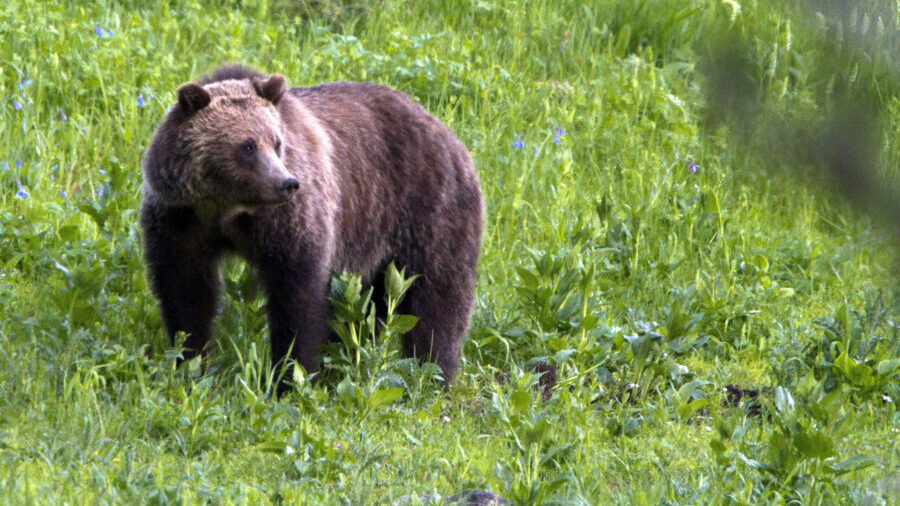National Park Service considers plan to bring grizzly bears back to the Cascades
Sep 29, 2023, 12:13 PM | Updated: 1:22 pm

(AP Photo/Jim Urquhart, File)
Credit: ASSOCIATED PRESS
(AP Photo/Jim Urquhart, File)
The National Park Service (NPS) is considering a plan to bring grizzly bears back to the after the bears have been absent from the region for three decades.
The NPS and the U.S. Fish & Wildlife Service have sent out a call for public input into a plan that is evaluating options for restoring grizzly bears to their former habitat. The last time a bear was spotted in the North Cascades was in 1996.
“We are looking for the public’s help in selecting the best path forward as we evaluate grizzly bear recovery on these federal lands,” Don Striker, superintendent of North Cascades National Park, .
According to the NPS, they were “an essential part of the ecosystem, distributing seeds and keeping other wildlife populations in balance.” Grizzly bears occupied the North Cascades for thousands of years as an essential part of the ecosystem and were key in spreading the seeds of native plants as well as controlling the population of local animals.
More on bears in the Puget Sound: Black bear eats goat in Bellevue, attempts second attack
The proposal offers several alternatives that could be enacted. One would leave things as they are. Two others would restore grizzly bears to the area but differ in how the bears would be managed.
Under the proposal, agencies would capture grizzly bears in British Columbia or from the Northern Continental Divide Ecosystem in the Rocky Mountains. Approximately three to seven grizzly bears would be released into the North Cascades each year over roughly five to 10 years.
The North Cascades is one of the largest wild areas in the lower 48 states, encompassing more than 9,500 square miles centered on North Cascades National Park. It also includes large areas of surrounding national forests.
The North Cascades ecosystem is one of only two grizzly recovery areas without an established population of bears, and due to its relative distance and isolation from other zones, it would not likely be repopulated from natural bear migration, environmental groups have said.
Federal officials note that grizzly bears tend to avoid areas of human activity, and the animals would be relocated to remote areas, away from grazing allotments. They will also be radio-collared and monitored.
Supporters say the shy, massive creatures — a symbol of true wilderness — should be brought back. They say the population won’t recover without help, and their return would increase the biodiversity of the ecosystem.
More on the WFDW: State record set: 21-pound mahi-mahi fish caught off Westport
“We know how to move bears successfully into new places, and we know how to live with them safely,” as part of a prepared statement last year. Servheen retired in 2016 after working for 35 years working as a grizzly bear recovery coordinator for the U.S. Fish and Wildlife Service. He continues to advocate for grizzly recovery in his retirement.
“For far too long the North Cascades have been missing an integral part of their unique ecosystem,” Kathleen Callaghy, the Northwest representative with Defenders of Wildlife, in 2022. “Returning the grizzlies will finally make this incredible wilderness whole again. What’s more, it is clear that the people of Washington overwhelmingly want this to happen.”
Others stated the animals should recover naturally, while some worry about potential increased dangers to recreationists and livestock, opposing the move over potential impacts to communities, ranchers, farmers and others.
During the 45-day public comment period, the agencies will host virtual meetings and meetings in the communities near the ecosystem to answer questions. For more details about how to submit comments and attend upcoming public meetings, you can visit the .














